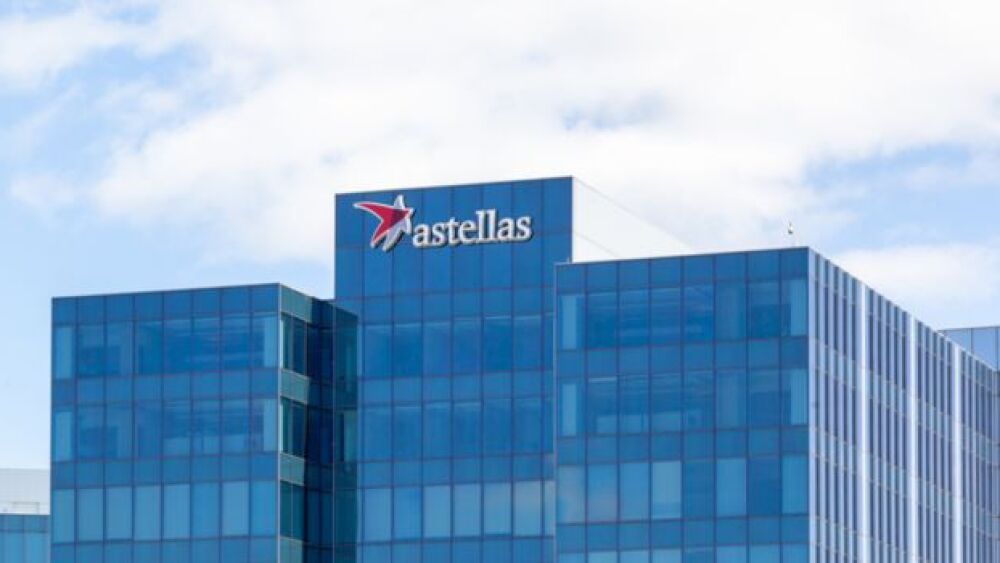The latest data show Izervay is safe and effective in a two-year trial. Just six weeks after securing FDA approval, Astellas plans to submit it to the regulator to expand its label for a longer treatment timeframe.
Pictured: Astellas Illinois headquarters/iStock, JHVEPhoto
Six weeks after securing FDA approval, Astellas Pharma is already eyeing a label expansion for its Iveric Bio-acquired eye injection. Topline Phase III results released Monday could potentially boost usage for Izervay with 24-month safety and efficacy data.
Izervay was approved by the FDA in early August for the treatment of geographic atrophy (GA) secondary to age-related macular degeneration. The label limited its use to up to 12 months based on trial data available at that time. Astellas will take the latest 24-month data on Izervay to the FDA in hopes to get a label update.
Monday’s Phase III results showed the complement C5 inhibitor safety data to be consistent after 24 months with no new safety signals identified. Astellas reported the drug “significantly” slowed GA growth compared to placebo at 24 months.
Astellas scooped up the asset in its $5.9 billion acquisition of Iveric Bio in a deal completed in mid-July. The Japanese multinational pharma already had a GA candidate in the pipeline, but Iveric’s Izervay was already under priority review by the FDA with a PDUFA date set, making it an attractive target.
Izervay‘s main competitor, Apellis Pharmaceuticals’ Syfovre, was approved by the FDA for GA in February of this year. Syfovre’s label has no time limit on treatment.
However, its injection was flagged for safety issues shortly after its launch. Apellis pointed to a particular needle included in certain injection kits as a potential cause after “internal structural variations were identified.” The company confirmed eight cases of retinal vasculitis, a potentially blinding side effect when severe, following the drug’s approval.
Izervay’s label indicates an injection every 28 days, while the recommendation for Syfovre is every 25 to 60 days. In addition to the longer-term safety data, Astellas said that Izervay showed a similar reduction in disease progression rate when dosed every other month.
The GA treatment market was valued at $32.6 billion last year and is expected to grow to $68.5 billion by 2029. Analysts at Seeking Alpha predicted Syfovre’s peak annual sales at $2.63 billion. Annual sales estimates for Izervay with its current label were more modest at $1.35 billion.
Kate Goodwin is a freelance life science writer based in Des Moines, Iowa. She can be reached at kate.goodwin@biospace.com and on LinkedIn.






